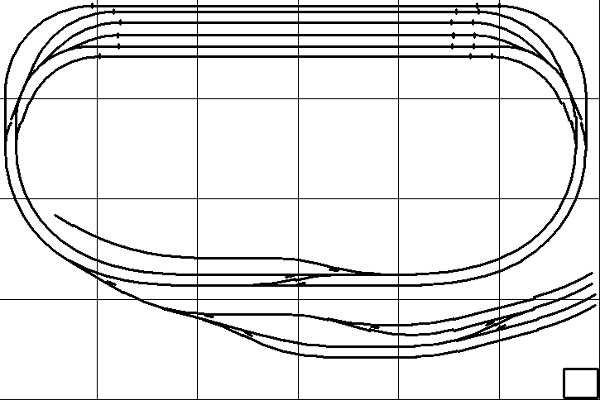A few photos from my recent trip to North Wales.
We start with the Conwy Valley line, which is possibly the most scenic of the standard gauge line in Wales, the only part of the National Rail network to run into the mountainous heart of Snowdonia. I’m not convinced that the a commuter DMU is really the ideal stock for this route, and I think there’s a good case for running heritage stock, at least during high summer. Doesn’t have to be steam; something like a class 37 and four or five Mk1 coaches would be idea.
At Blaenau Ffestiniog we change to the 2′ gauge Ffestiniog Railway, one of the longest established of Britain’s steam tourist lines, for the run down to Porthmadog. Motive power is the 1879-built double Fairlie “Merddin Emrys”, dating from the days when the railway was primarily a slate carrier.
The Ffestiniog Railway doesn’t consider itself a preserved railway, but a working railway operated to suit today’s needs. While there are several historic locomotives in the fleet, they’ve also got a number of recently built replicas of long-scrapped designs. The single Fairlie “Taliesin” is such a locomotive, built in 1999 using the design of an original locomotive scrapped in 1932.
“Lyd”, the newest addition to the fleet is another example, based on the locomotive “Lew” of the Lynton and Barnstable Railway in Devon. The original “Lew” was shipped to Brazil on closure of the L&B in 1937, and its ultimate fate remains unknown.
The Welsh Highland Railway is the longest narrow gauge line in Britain. The original line opened as a through route from Dinas Junction to Porthmadog in 1922, and closed after just 15 years. The recent reconstruction as a modern tourist railway has been controversial, with big South African Beyer-Garratts brought in to work long corridor trains, a far cry from the small tank engines of the original line. The coaching stock on this train includes a surviving coach from the original WHR, right behind the loco.
The high-season timetable has three services a day, so it’s possible to break the journey for a couple of hours it you start out on the first train and come back on the last. I got off at Beddgelert and walked down the valley to the bridge over Afon Glaslyn to photograph the train I’d been on heading back to Caernarfon.
90 minutes later I’m back at the same spot, on the last southbound train of the day, which crossed the northbound train at Rhyd Ddu, now heading back to Porthmadog through the spectacular Aberglaslyn pass.
And finally, it’s five hours on board an Arriva Trains 158 with non-functional air-conditioning to see the wonderful Panic Room at Bilston. But that’s the subject of another blog post. The Cambrian Coast line is another very scenic route, hugging the coast through Harlech, Barmouth and Aberdovey before heading inland though the Dovey and upper Severn valleys.
















